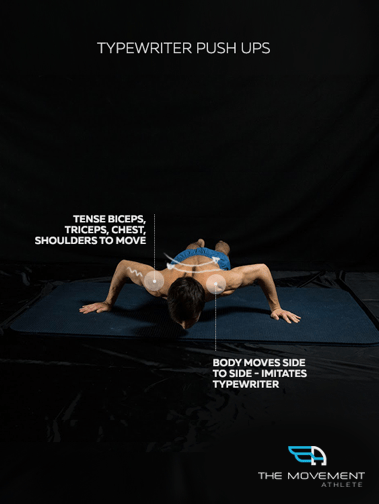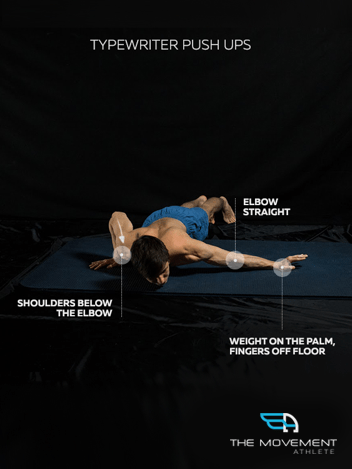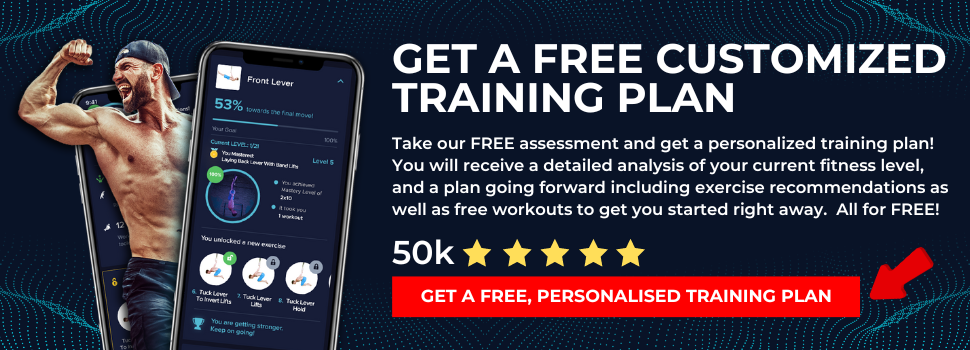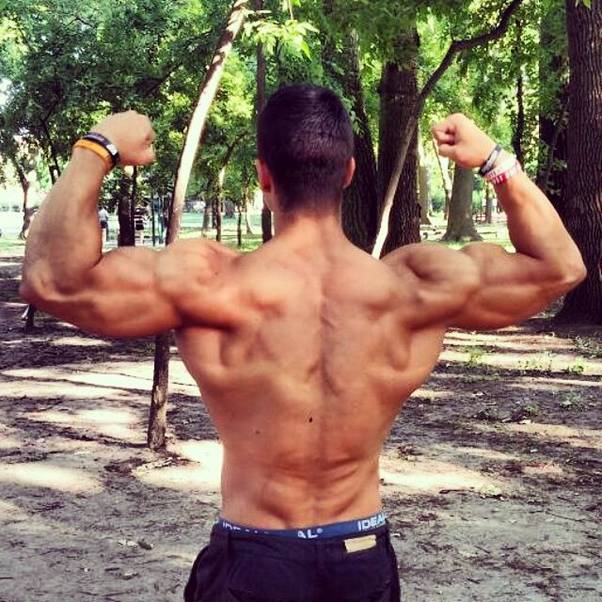If you want to build calisthenics muscle mass and bulk up, you need to pick up some heavy stuff repeatedly… or so you’re told.
I’m here to tell you that you don’t. Your body alone is heavy enough to achieve that same exact goal, minus the expensive gym membership, free weights, and complicated machines.
Not only does bodyweight training allow you to bulk up as well as a bodybuilder, but it provides your body with more than just some new, pretty-looking muscle. With bodyweight training, you build muscle, increase strength, develop endurance… and get into a split while you’re at it!
Yes, You Can Build Mass With Calisthenics
Why would lifting weights be more effective than bodyweight training? Your body doesn’t differentiate the kind of weight you’re working on, but rather how you work. Bodybuilders have the muscle-building technique down pat, while calisthenics tends to be better-known for muscle endurance.
…but that’s not all calisthenics is good for!
We live in a society convinced that without the gym, you can’t get fit.
I’m here to tell you…that’s a preconceived notion and a load of bullsh– bullcrap.
Ever Google male gymnasts? They’re packed with muscle, yet rely ONLY on bodyweight training.
Here’s the thing: to build calisthenics muscle mass, you gotta train a bit differently.
The “Science” Behind Building Muscle Mass
How does calisthenics muscle mass grow? If you don’t know, well… you should, and I’m here to help you find out how.
Muscle doesn’t grow while you’re training it. It grows when you’re resting.
For your muscles to experience that growth, they need to be challenged by tension or weight for an extended period of time. It is this specific kind of stress that breaks down muscles with micro-tears.
Rest allows them to rebuild. If you’re eating enough calories, your body will naturally use that rest-time to both restore the muscle and add some mass to it.
How do you rest?
Get high-quality sleep and manage your stress levels. There’s no way around it.
Calisthenics can easily recreate a situation where enough tension or weight is placed long enough on the muscle that it’ll resist, then tear, and rebuild with more mass. The more you train, the more tension or weight you’ll need to place on the muscle. It’s levels of resistance grow the more you train and develop strength.
KEEP IT SIMPLE
- Training with progressive overload by making your sessions much harder every time
- Proper nutrition by meeting the caloric requirement and macros through whole foods
- Good recovery with high-quality sleep and stress management
Calisthenics is a form of resistance training. With the right techniques, you can implement overload on your muscles that lifting weights can also do.
See? You don’t need to be a bodybuilder. You can build muscle with bodyweight exercises.
Train. Eat. Sleep.
How do I build muscle mass with calisthenics?
Create a tension/resistance in the muscle.
This stress will help your muscle grow in the same way weight-lifting would.
But if you want to build muscle mass as quickly as possible, calisthenics won’t be right for you.
If you want to make it a long-term thing though, calisthenics is totally for you.
Calisthenics is focused on progressions. Start with what your body allows you to do, then up the ante as you keep training.
More than that, don’t think that just because you can easily execute 20+ push-ups, you’re advanced.
Calisthenics wants you to slow it down, and focus on your form. Here’s some useful terminology if you take your training seriously:
1. Concentric, or positive movement is the movement where you go up in your push-up. Technically, it’s the motion of an active muscle while it’s retracting under load.
2. Eccentric, or negative movement is the movement where you go down in your push-up. Technically, it’s the motion of an active muscle while it’s lengthening under load.
Bodyweight Muscle-Building Techniques
You don’t need to be a bodybuilder to build muscle mass, but you do need technique. Here are some of the main tricks you can use to maximize your bodyweight training aiming to build muscle mass.
1. Slow it DOWN
Bodyweight training relies heavily on the application of concentric and eccentric movement. Depending on how you train both concentric and eccentric movements, your body will develop differently.
So even if you can do 20+ push-ups, I want you to slow down the entire movement and deconstruct it into separate steps.
Instead of powering through as many push-ups as you can, do less and focus on your form. In fact, try taking 30 seconds for each aspect of the movement.
Go down slowly, controlling your descent the entire time (4s minimum). Once you get down to a couple of inches from the ground, stop for a couple of seconds before pushing yourself back up in one explosive move.
By doing this, you’re taking the time for your eccentric movement to happen. You’re helping the muscle develop differently than most people train it. In fact, eccentric movements are where the micro-tears I mentioned will happen most.
So stop ignoring the eccentric movements if you want to gain that big muscle!
2. It’s All About The Angles
Angular training is this awesome technique where you use the angle of your body to create more tension in the muscle.
If you move your body around, adjust its angle, move your elbows in or out, bend or extend your knees – you’re doing angular training.
In fact, calisthenics uses angular training to make exercises progressively difficult. It is at the core of many calisthenics progressions; a new athlete training wall push-ups will make the exercise progressively difficult by adjusting the angle of the exercise. By placing your feet further and further away from the wall, you’re adding more weight onto your arms and making the push-up increasingly difficult.
An awesome example of angular training is the Typewriter Push-Up.
In this exercise, your starting position is a wide-armed push-up. Using your toes, arms, and balance, you move your weight around your body, creating the need to RESIST in a variety of way.
Guess what? You’re pushing your muscles, creating tension and resistance that will then cause the micro-tears which will then cause – guess what? – muscle growth.
3. UNILATERAL WORK
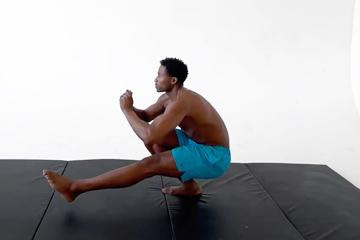
As mentioned earlier in terms of workout, you can build muscle by progressive overload. This is done by increasing the intensity of your workout.
Strength is one of the most important physical attributes for any athlete. It’s essential to be able to maintain strong enough muscle groups to increase your muscles’ potential.
Calisthenics training might seem limited when it comes to increasing the intensity further since you will only have to work with your bodyweight (especially with leg training).
This is when unilateral work or one-arm work comes in.
By isolating one arm work for your pull-ups, push-ups, or legs with pistol squats, you can further stimulate your muscles to gain mass.
For your upper body, you have the following:
- one-arm push-up
- one-arm pull-up/one-arm chin-up
- one-arm rows
For your legs, the pistol squat is the best exercise. But since the legs are already very strong as a muscle group, it’s best to incorporate other leg exercises that “isolate” for overload such as:
- calf raises
- nordic curls or leg extensions
- quad extensions or reverse leg nordic curls
Not only do these motions help you in gaining muscle, but they will also develop mobility and control as well.
You can always rely on weighted squats if ever you want to gain more strength and muscle.
For the upper body, calisthenics training will do the trick!
4. Stick To The Basics
It’s easy to get lost in a sea of exercises when you have a specific goal in mind.
While variety is great, returning to the basics such as pull-ups and push-ups is always a great option to develop strength and muscle.
With bodyweight training, as you’re gaining “clean” weight, exercises will naturally also get heavier.
So don’t think that you already hit a plateau if you find it harder to add a rep in your pull-up. You might be getting stronger and getting bigger at the same time.
You can also choose the proper variation if the “basics” of the basics are too easy.
5. JOIN THE RESISTANCE!
No, I’m not talking about a revolution. I’m talking about bodyweight distribution.
Even in calisthenics, you need to work with a low rep range if you want to build muscle mass. If you worked longer, you’d be focusing on muscular endurance. That’s not what you’re looking for, right? So don’t.
The thing with bodyweight training is… you can’t increase the challenge level of your workout you carry by just adding weight.
But there’s a trick!
This is where bodyweight distribution comes into play.
It might come as a surprise to you, but when you’re in a neutral push-up position, your weight is evenly distributed between your two arms. Guess what happens if, oh, maybe you placed all your weight on your right hand?
SURPRISE! More weight is added. Suddenly your right side needs to RESIST and stay strong against this weight that you didn’t need a machine to add on.
Let’s take the Typewriter push-up again.
It’s the perfect example of angular training, but it can easily be used for bodyweight distribution.
Instead of doing the movement by pushing on your arms and moving around, repositioning your body, you can simply move from one side to the other.
You’re switching your bodyweight around without changing anything else, and bam! You need to RESIST.
You Gotta EAT If You Want To Grow BIG And STRONG
If you want to build your muscles, you gotta eat.
Why?
Well… it’s time to get science-y again.
For muscles to either be maintained or grow, you need protein. Depending what your goal is, you need lots of protein.
Remember when I talked about the micro-tears your muscles experience when you work out? When you rest, your body uses protein chains to repair those tears, and if you want more muscle, you need more protein. Basically.
Many different publications talk about this, including Men’s Health. Different studies talk about different portion-size, but most people agree that 0.75 grams of protein should be eaten for every pound of bodyweight you have…if you’re already within a healthy body fat range.
If you’re overweight, you should eat the portion of protein you’d need if you were at your ideal body weight.
But that’s not all.
It’s not just about eating the right amount of protein. Scheduling is super important too, and you need to portion your protein throughout your different meals. Trying to O.D. on protein in a single meal just doesn’t sound quite right, does it?
Well, don’t do it.
Try dividing your protein-intake into at least three different meals in the day. In fact, the more balanced your protein-intake throughout the day, the better. If you stock up on protein in one specific meal, you’ll basically create a backlog in your system, and your body won’t benefit from that.
And one more thing…
The most effective way to consume protein is to have a meal a couple of hours before and right after your workout. Studies have shown that slightly upping your protein-intake before and/or after your workout is one of the best ways for it to help your muscles grow.
If you work out early in the morning, make sure to eat a meal right after.
This is a promise: your body and energy will thank you.
…and your muscles will get bigger.
CREATING THE BEST CALISTHENICS MUSCLE-building workout!
Before I share the awesome program I’ve come up with, there are a few things you need to know to train calisthenics well.
For example, you might not know that your body gets accustomed to a single, repetitive routine. So let’s talk about periodization for a second.
RULES OF THE GAME
High volume and multiple sets might pack on muscle quickly, but you shouldn’t only train this way.
Training exclusively this way will get you stuck in “general adaptation syndrome,” which means your body will adapt to the program quickly. You’ll run into a massive plateau.
This is why you should use a periodized routine. Choose one that emphasizes high volume and multiple sets—a plan that intersperses hypertrophy workouts with regular strength-focused workouts.
If you switch up your habits, your body can’t really adapt to a single workout, so your muscles will constantly be stimulated into growing. Periodization means varying exercises, workouts or weekly routines.
For Example:
You could organize your week to be 2-to-1 hypertrophy/strength rotation; you do 2 hypertrophy workouts (8 to 12 reps, 6 sets) for every 1 strength workout (4 to 6 reps, 3 sets). Slotting in a strength day helps me lift more on my hypertrophy days.
TRANSITIONING
When they do move from one progression exercise to another one in the progression we use transitioning.
For example – If you are moving to a new exercise – the first few reps of the new exercise might be really low – for example you are moving from knee pushups to push ups. You will be getting started at 2 reps in 3 rounds for the pushup – this is very low number of reps.
So to make it challenging we will keep the mastery number of reps from the knee pushups from the previous exercise is kept so you both work on volume for strength but also you gets in a few reps at the low volume (harder exercise) to build more muscle mass. That means that your workout would look like
3*10 of knee pushups and 2*3 of normal pushups.
Unless you reach 1/6 of required reps for the new exercise (normal push up) the mastery from the previous one is kept.
ADVANCED PROGRAMMING FOR BUILDING MUSCLE MASS
Two main factors which affect muscle growth are the mechanical tension on the muscle (the load or weight it feels) and the total work volume done (total amount of weight moved by the muscle over a certain period of time). In The Movement Athlete programs bodyweight movements according to scientifically established principles in order to make its athletes stronger and more muscular.
Not only will athletes build up to movements that are heavy enough to promote muscular growth, but the reps and sets are also chosen to provide enough work volume at the appropriate intensity level for some good high-volume muscle building. In terms of losing weight, being more active will increase your net calories expended and the app will certainly help you there.
Each progression you are working on follows the structure in the image below:
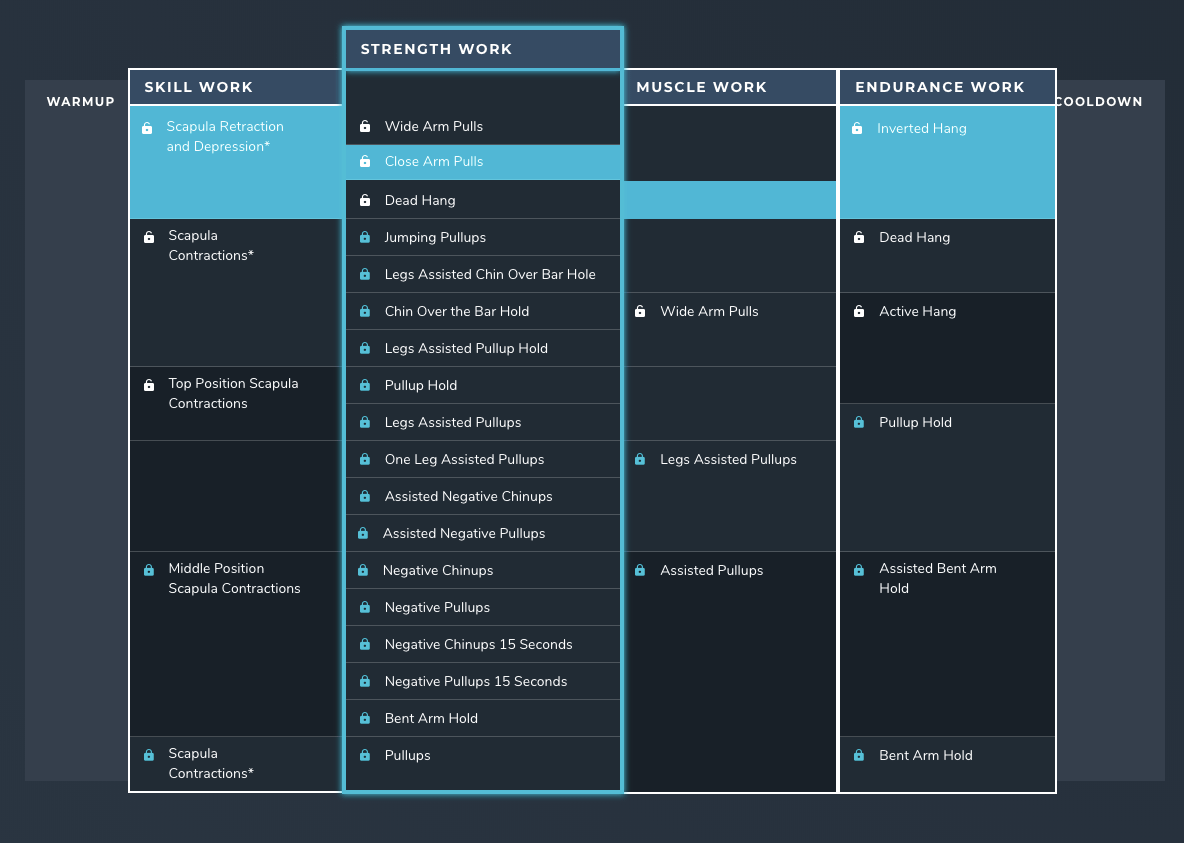
Each workout consists of several components:
- Warmup
- Skill work/ Movements
- Strength
- Hypertrophy/ Muscle
- Endurance / Cardio
- Flexibility & Cooldown
SKILL WORK
The technique is key in calisthenics. Skill movements are movements that are designed to either draw focus to specific technique cues, train important movement patterns for the subsequent strength movements or act as warm-ups for the strength movements. Skill movements are done at low intensity and low total volume.
STRENGTH WORK
Strength movements or main movements are the reason we are here. These are the movements that will chart your progression through the world of calisthenics and bodyweight fitness. There is a large variation in strength movements, from easy to hard, low volume to medium/higher volume, dynamic to static.
MUSCLE WORK
A bigger muscle has the potential to become a stronger muscle. Muscle movements are movements that are done at low-to-medium intensities and higher total volumes for the purpose of building muscle. The lower intensities also allow athletes to focus on the muscles involved and to get a good squeeze and pump. Many muscle movements are pulled from appropriate strength movements.
ENDURANCE WORK
Many calisthenics movements involve static holds. Endurance movements train the athlete’s capability to hold the body in various positions. These are typically programmed to be easier than the equivalent strength movement holds. Instead, more work volume is added for more practice time.
Taken together, these different movement types are designed to produce skilled, strong, and complete bodyweight athletes.
COMBINING YOUR MUSCLE-BUILDING TRAINING VS SPLITTING THE ROUTINES PER GOAL
So you can be splitting your routine and just do muscle-building workouts but the truth is that to develop good overall health you will need to cover all the aspects of the training. Each aspect helps the other one too.
In The Movement Athlete Strength Academy, we combine those elements into a single workout.
The way workouts are programmed is around a specific skill. So if today you are working on muscle ups – the program will pull skill, strength, muscle, and endurance exercises from muscle up based on where are you at in the progression and create a workout based on that.
Why do it that way?
In an ideal situation (abundant time, energy, equipment), it can be beneficial to separate training goals or the systems being trained. For example, you would have a heavy strength workout on one day or at one time of day, then have a speed and agility workout on another day or at another time of day. Professional athletes often train like this, often with multiple sessions a day, six days a week. This allows the athlete and the athlete’s body to focus on the type of training of that session and to reduce interference from training several aspects of fitness concurrently.
The Movement Athlete does include workouts that focus on different aspects. However, due to various reasons, many of the typical workouts will train skill, strength, muscle development, endurance, and flexibility in the same workout. This is because:
– Many of the users of The Movement Athlete are at the beginner to early intermediate level. At this stage, there is not much need for specialized and separated training. Just putting in the quality effort, sticking to a good workout schedule, and working through the TMA progressions will give you good gains. The more advanced a user becomes and the more often a user can train, the more likely the user will be given specialized workouts.
– The less often a user can train, the less likely it is that the workouts can be organized according to type or goal. For one to four workouts a week, it’s a better use of time to train as many movements and movement types as possible. We would also prefer that the user trains the movements and the various aspects of fitness more frequently, especially through the beginner and intermediate phases.
TMA workouts are organized in order to maximize the effectiveness of each aspect (skill, strength, endurance etc.). Therefore there is no large penalty to training all aspects together in each workout
READY MADE MUSCLE BUILDING WORKOUT ROUTINE
Note that this is a ready-made routine and is not personalised hence if you are not comfortable performing some of the exercises please don’t. We do recommend that you look into The Movement Athlete Strength Academy personalised training program.
Don’t expect this routine to magically make your muscles grow. It’ll help, but it won’t happen in a day, a week or even a month for some people. Just keep that in mind.
Here’s a one-week program that I’ve followed with amazing results.
MONDAY – BACK AND TRICEPS
- Assisted 1 arm pull-up work 3 – 5 x 1-5 (L/R)
- Wide Pull-up 3 – 5 x 8-10 / Wide Row 3 – 5 x 8-10
- Close Pull-up 3 – 5 x 8–10 / Close Row 3 – 5 x 8-10
- Normal Pull-up 3 x MAX
- 1 Arm push-up 5 x 5 (R/L)
- Diamond Push-ups 3 – 5 x 15–20
- Triceps extension 4 x 8–10
- Straight Bar Dips 3 – 5 x 6–8 (Slow eccentric movements)
- Dips 2 – 3 x MAX
TUESDAY – LEGS
- Pistol Squats 5 x 5 – 10 (R/L) (If you can’t perform a pistol, find a variation that fits you)
- Normal Squats 3 – 5 x 15-20
- Close Squats 4 x 15-20
- Lunges Matrix (Front, Side) 3 x 6 – 8 (Go immediately from Front to Side Lunge)
- Calf Raises 5 x 15 – 20 (Slow Reps)
- 1 Legged Calf Raises 3 – 5 x 10 (Slow Reps)
- Jump Rope 3 x 70 – 140 jumps with straight knees using your calves as a jumping power / Sprints 5 x 30 m 2 x 50 m (MIX IT UP)
WEDNESDAY – REST
This means don’t work out. But if you want to move, do yoga, spend an hour stretching and training your flexibility…that’s a good thing.
THURSDAY – SHOULDERS
- Handstand Wall 3 – 5 – 45+ Sec (If you can perform a free stand handstand then do it!)
- Handstand Pushup Wide 3 x 6 – 8 (FREESTAND OR USING A WALL)
- Handstand Pushup Close 3 x 6 – 8 (FREESTAND OR USING A WALL)
- Hindu Pushup 4 x 10 – 15 – SUPERSET – Pseudo Pushup 4 x 10
- Straight Bar Dips (Slow negatives) 4 x 10
- Dips 4 x 8 – 12 (Slow tempo)
NOTE: If you can’t perform a handstand pushup, then you can follow our book onGetting Started With Calisthenics.
FRIDAY – REST
Again – stretch, do yoga, meditate, move, have fun, play with your body.
SATURDAY – CHEST AND BICEPS
- Wide Push-ups 3 – 5 sets of 15 – 25 reps
- Close Push-ups 3 – 5 sets of 15 – 25 reps
- Declined Push-ups 3 – 5 sets of 15 – 25 reps
- Dips 4 sets of 12 – 25 reps
- Chin-ups 4 x 8 – 12
- Chin-ups negatives 3 – 4 x 6 – 8 negatives
- Rings Biceps Curl 4 x 8 – 12
- Close grip chin-ups 3 x MAX (GIVE ALL YOU GOT)
SUNDAY – REST
Streeeeeeetch.
Calisthenics can DEFINITELY help you build the muscle mass you want, but the process won’t be as instantly visible as weight-lifting.
…The results will definitely be more long-lasting though!
A calisthenics body…yup. This can happen. Just be patient.
SO WHAT what if I can’t do some of these exercises?
WHY the program above although good, WILL NOT GET RESULTS FOR MOST OF YOU…
Create an optimal training routine just for you
This is a problem a lot of us run into. We’re given routines – usually based on a standardized level – beginner, intermediate, advanced. Calisthenics Academy used to do that too – because it’s very hard to create a personalised training for each and every person unless we spend a significant amount of time with them.
There was just one problem with this approach (actually there are a lot of problems with it) – it hindered our athletes’ progress. We’ve written extensively on the matter in the blog post, the end of beginner/intermediate/advanced – that is hurting your training.
It simply explains why a lack of personalisation is hurting your training.
Imagine if some of these exercises above were too hard for you.
Your body will try to compensate with a poor form, movement
dysfunction and possibly risk injury if it’s too challenging.
And now imagine if some of these exercises were too easy they
wouldn’t challenge your muscles to grow – you’d simply be
wasting your time.
This is why we created The Movement Athlete: to offer a fully personalized training program reflecting exactly where your level is for optimal performance.


